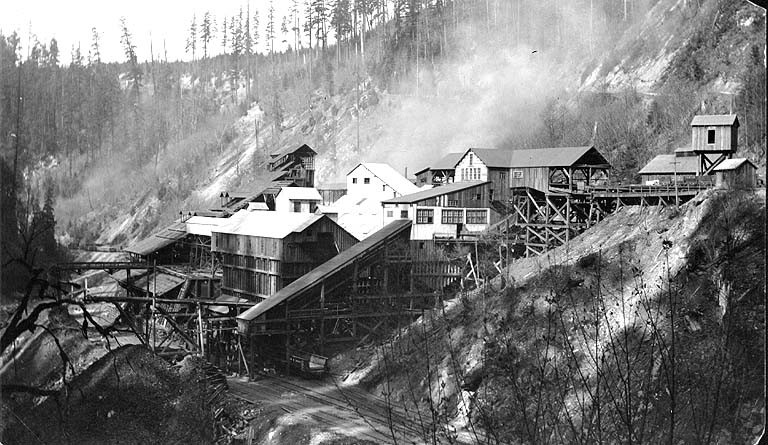 Carbonado, about 12 miles from Mt. Rainier National Park, served as an important coal mining community in the late nineteenth and early twentieth centuries, when the town operated the largest coal mine in Pierce County. Carbonado was one of quite a few towns in the Carbon River valley to be settled during an economic boom in the region. The boom was brought on by raw material demands in nearby growing towns such as Seattle and Tacoma. Most of these towns were company towns, meaning that they specialized in the harvest of raw materials, owned the plot of land that the town was situated on and that the resources were harvested from. Often—and such was the case of Carbonado—the company also owned the houses and the energy resources as well. The energy resource in Carbonado was also the raw material that the citizens of the company town were harvesting, coal.
Carbonado, about 12 miles from Mt. Rainier National Park, served as an important coal mining community in the late nineteenth and early twentieth centuries, when the town operated the largest coal mine in Pierce County. Carbonado was one of quite a few towns in the Carbon River valley to be settled during an economic boom in the region. The boom was brought on by raw material demands in nearby growing towns such as Seattle and Tacoma. Most of these towns were company towns, meaning that they specialized in the harvest of raw materials, owned the plot of land that the town was situated on and that the resources were harvested from. Often—and such was the case of Carbonado—the company also owned the houses and the energy resources as well. The energy resource in Carbonado was also the raw material that the citizens of the company town were harvesting, coal.
During the time of the initial boom in the valley Carbonado grew to rival the size of Tacoma at the time. The railroad, which was integral to the transportation of people, of the raw materials harvested and the supplies need by the towns, stretched all the way up the valley too. Not only did it service the towns but also several homesteads farther up the valley. These homesteads were settled predominantly by Polish immigrants. They supplied the towns down the valley with fresh milk and eggs. Two survive to present day, one known as Carbon River Ranch (the main house is actually the old Fairfax school and can be seen from the highway) and the other formerly known as Huckle-Chuck. At Huckle-Chuck the original homesteaders house and one of their barns are still used and functional. At the peak of the boom both of these homesteads and the towns which they supplied were quite productive and lively.
The time that Carbonado did spend as a coal mining town is forever kept by the a cemetery, abandoned mines, a grown-over coal slag pile, a school, and the company houses left behind. The cemetery holds the memories of older and more recent dead with many of the graveholders family still living nearby. Huge concrete monoliths that once held that cables for the mining carts, point straight towards the old mine shafts and openings and stand overgrown and utilized now only by the town's children. One hill in town started out as the coal slag pile and now has been carpeted by ivy and trees. The school makes up what is known as the Carbonado Historical School District and grades K-8th still attend there. Many of the houses that the company built and originally owned still line main street. They look very similar to each other as was the style of the company builders at the time. And though many of the miners abandoned the town, in some of those houses still live the direct descendants of the original miners.
About This Geocache:
- The best access to ground zero is probably from the trail. Go just past that curved tree, then turn left. ;)
- You're looking for a small, Lock 'n' Lock style container.
- It's near some old ruins that could do with a little CITO help.
- Do watch for muggles. The cache isn't too far from the historic Carbonado Saloon.
2016 was the 100th anniversary of the National Park Service, and to celebrate, Visit Rainier and WSGA hosted the Visit Rainier Centennial GeoTour - 100 caches placed in and around Mount Rainier National Park. The geocaches highlighted the rich history, scenic wonders, quaint communities, and hidden gems of the Rainier region. Participants received geocoin and pathtag prizes for finding all the caches.

